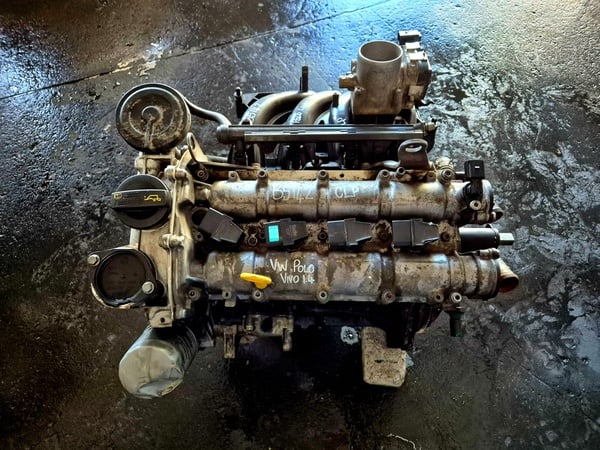Reduce downtime by using a well-maintained clp engine.
Reduce downtime by using a well-maintained clp engine.
Blog Article
Just How a Clp Engine Can Enhance Efficiency in Numerous Industries
The arrival of CLP engines marks a significant shift in functional effectiveness across various markets, driven by their capability to enhance gas intake and decrease downtime. As organizations progressively prioritize sustainability together with effectiveness, the role of CLP engines comes to be even much more critical.
Introduction of CLP Engines
CLP engines, or Continual Fluid Propellant engines, represent a significant development in propulsion technology, particularly for room applications. These engines make use of a continual feed system that enables the sustained expulsion of propellant, bring about enhanced performance and performance contrasted to standard strong or hybrid propulsion systems. By maintaining a constant flow of fluid propellant, CLP engines can attain a lot more specific thrust control, which is critical for steering spacecraft in various mission circumstances.
The style of CLP engines incorporates sophisticated materials and cutting-edge fuel monitoring systems. clp engine. This leads to lowered weight and enhanced dependability, essential variables for long-duration room goals. The constant procedure decreases the threat of combustion instability, a common challenge in standard rocket engines.

Advantages in Manufacturing
The production of Constant Fluid Propellant (CLP) engines provides a number of remarkable benefits that enhance both performance and cost-effectiveness. Among the main advantages is the streamlined manufacturing process, which reduces the intricacy connected with conventional propulsion systems. By utilizing liquid propellant, suppliers can accomplish higher accuracy in engine performance, causing optimized energy output and lowered waste.
Furthermore, CLP engines promote a greater degree of modularity, permitting much easier integration right into numerous manufacturing lines. This versatility can significantly decrease lead times and boost total operational versatility. Using CLP innovation likewise often tends to reduce the demand for substantial upkeep due to less relocating parts, which converts into decreased downtime and operational prices.

Applications in Logistics
Leveraging Continuous Fluid Propellant (CLP) engines in logistics supplies considerable advantages in operational effectiveness and reliability. These engines supply a durable remedy for various transport demands, enabling the seamless movement of items across huge distances. The intrinsic layout of CLP engines allows for constant power output, which converts right into smoother and a lot more foreseeable transportation official website routines.
One of the essential applications of CLP engines in logistics is in heavy-duty freight transport, where they can drive both ground and airborne vehicles. Their capability to preserve high performance under varying tons problems makes sure that delivery timelines are satisfied, thus boosting consumer fulfillment. Additionally, CLP engines can be integrated into automated logistics systems, helping with real-time monitoring and maximizing path preparation.
Additionally, the durability of CLP engines lowers maintenance downtime, allowing logistics business to optimize their functional abilities. This is especially useful in warehousing procedures, where efficiency in dealing with and carrying items is crucial. As logistics remains to advance, the assimilation of CLP engines represents a forward-thinking strategy that not only enhances efficiency but also sustains the industry's growing needs for reliability and speed.
Impact on Energy Performance
How do Continuous Liquid Propellant (CLP) engines boost energy effectiveness in transport? CLP engines utilize a constant flow of fluid fuel, maximizing burning procedures and preserving a secure thrust output. This layout reduces power losses associated with standard burning engines, where fuel delivery can differ and lead to inefficiencies.
The continual operation of CLP engines enables for a more efficient thermal cycle, resulting in higher particular impulse compared imp source to traditional engines. clp engine. This converts to decreased fuel usage for the exact same quantity of work done, dramatically lowering operational costs throughout various transport markets, including aviation and maritime industries
In addition, the capability of CLP engines to maintain optimal performance under varying lots conditions reduces the demand for regular velocity and slowdown, additionally improving gas performance. Improved power performance not just adds to cost financial savings however also leads to lower greenhouse gas exhausts, lining up with international sustainability goals.
Future Trends and Innovations
Arising developments in Continuous Liquid Propellant (CLP) engine modern technology guarantee to transform the landscape of transport efficiency and sustainability. As industries pivot toward greener alternatives, CLP engines stand at the leading edge, incorporating cutting-edge products and style techniques that boost efficiency while lessening ecological impact.
Among the most appealing fads is the adoption of crossbreed systems that incorporate CLP engines with renewable energy sources. This harmony can maximize fuel intake and lower emissions, aligning with international sustainability objectives. Furthermore, improvements in computational liquid review characteristics (CFD) are facilitating the design of even more aerodynamically reliable engines, bring about minimized drag and enhanced fuel efficiency.
Additionally, the development of wise monitoring systems is set to enhance functional effectiveness. These systems utilize data analytics and IoT technology to optimize engine efficiency in real-time, making certain that the engines run within their most efficient specifications.
As research study remains to discover alternative propellant formulations-- such as biofuels and artificial gas-- the future of CLP engines looks encouraging. By harnessing these advancements, industries can not just enhance their performance however also contribute substantially to a cleaner, a lot more sustainable future in transport.
Conclusion
In conclusion, CLP engines represent a significant advancement in effectiveness across multiple sectors. The integration of advanced products and fewer relocating components reduces maintenance requirements, while placement with sustainability objectives positions CLP engines as an essential technology for the future.
Report this page